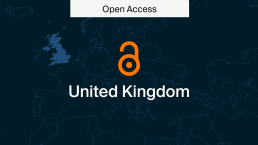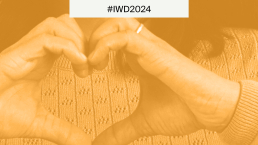
Funders Push for a Full Transition to Open Access Through Plan S
In a bid to push forward the transition to fully Open Access publishing, a number of funders have come together under the banner of cOAlition S and put forward an initiative called Plan S. Originating in Europe and led by Robert-Jan Smits of the European Council, Coalition S aims to implement Open Access through Plan S. The key message is the following:
After 1 January 2020, scientific publications on the results from research funded by public grants provided by national and European research councils and funding bodies must be published in compliant Open Access Journals or on compliant Open Access Platforms.
Plan S principles
This statement is supported by ten principles:
- Authors retain copyright of their publication with no restrictions. All publications must be published under an open license, preferably the Creative Commons Attribution Licence CC BY. In all cases, the license applied should fulfil the requirements defined by the Berlin Declaration;
- The Funders will ensure jointly the establishment of robust criteria and requirements for the services that compliant high quality Open Access journals and Open Access platforms must provide;
- In case such high quality Open Access journals or platforms do not yet exist, the Funders will, in a coordinated way, provide incentives to establish and support them when appropriate; support will also be provided for Open Access infrastructures where necessary;
- Where applicable, Open Access publication fees are covered by the Funders or universities, not by individual researchers; it is acknowledged that all scientists should be able to publish their work Open Access even if their institutions have limited means;
- When Open Access publication fees are applied, their funding is standardised and capped (across Europe);
- The Funders will ask universities, research organisations, and libraries to align their policies and strategies, notably to ensure transparency;
- The above principles shall apply to all types of scholarly publications, but it is understood that the timeline to achieve Open Access for monographs and books may be longer than 1 January 2020;
- The importance of open archives and repositories for hosting research outputs is acknowledged because of their long-term archiving function and their potential for editorial innovation;
- The ‘hybrid’ model of publishing is not compliant with the above principles;
- The Funders will monitor compliance and sanction non-compliance.
MDPI’s statement on Plan S
Further details will follow later in 2018 or in early 2019. Discussions are currently ongoing with various stakeholders looking at implementation plans and expanding the number of participating funders. MDPI has issued a statement in support of Plan S. We believe it has the potential to provide a better deal for research communities and increase access to the latest research for society as a whole. Some, particularly publishers whose primary revenue still relies on subscription models that are not supported by Plan S, have been more critical.
Here, we highlight some of the implications of Plan S and its potential benefits.
Different types of journals
Plan S supports a large number of existing journals. Open Access journals, such as those in the Directory of Open Access Journals, are very likely to already be compliant. This includes journals from Open Access publishers such as MDPI and those from publishers that operate both subscription and Open Access journals. Additionally, subscription journals could qualify if they allow immediate archiving of accepted or published versions in Open Access format.
Perhaps the boldest statement of Plan S is the exclusion of hybrid journals. These are journals that can be accessed by subscriptions, but for which individual papers can be made Open Access by payment of an additional fee. The original aim for hybrid journals was to allow for a transition to Open Access. However, the majority have stayed hybrid for many years and show no signs or removing subscription content. As such, they have not supported a shift to Open Access that the supporters of Plan S are looking for. The publishers of these journals must choose whether to ignore Plan S and potentially lose authors or to switch to a more compliant model. Those that have developed a robust Open Access portfolio are best placed to respond, but it seems that most are waiting for further details before committing to a course of action.
Different funding models
Plan S is not prescriptive about the funding model used for compliant Open Access journals. Since it is an initiative from funders, it opens the possibility that new ways of covering publishing costs could emerge. Like many large Open Access publishers, MDPI remains reliant on APCs, but we are open to and interested in alternatives that allow publishers to cover the costs for running journals. These costs include managing peer review, production of accepted articles (in PDF, HTML, EPUB, and XML formats), dissemination of published papers, and other tasks related to maintaining the visibility, quality, and reputation of the journal.
Most people in academic publishing and research accept that broader access to research is a benefit to society. Difficulties can arise making that vision a reality when a closed model has been used for such a long time. It is helpful to have a clear message from funders about the kind of Open Access they would like to see and a firm commitment to making it happen.
What to look for next
There is much that will happen between now and the proposed launch date in January 2020. Here are our tips for what to watch out for:
Firstly, Plan S needs further details. A large amount is being written and discussed about how to achieve its implementation and areas where the language of the statement is open to interpretation. While the statements above are said to be non-negotiable, there appears to be scope for clarifying the statement and having multiple routes to compliance.
Over the coming months, we can expect to see proposals for how Plan S can be successfully launched. These will include the types of journals and platforms that can qualify, both existing ones and new models. Funders may also put forward proposals for the large-scale funding of Open Access publication; this point has been the least discussed so far, but should become increasingly important as the 2020 deadline approaches.
Current discussions
To date, much of the discussion has been carried out by funders, publishers, and librarians. Researchers also need to be brought into the debate to influence how the final version of Plan S will look. Researchers are central to the research endeavor and serve as authors, editors, reviewers, and readers of research material. Their experience and knowledge will help to improve the proposals made by publishers and funders.
The reach of Plan S could be critical to its success. Most agree that Open Access will play a key role in the future of research reporting and is predicted by many to become the dominant model of publishing. The timescale of this transition is unclear, but further adoption of Plan S within and beyond Europe would certainly accelerate the change. Many will be keeping an eye on support for Plan S from funders based in the US, China, and other regions outside of Europe. If you want to learn about how countries around the world are adopting Open Access, see our article Open Access Around the World.
Time for dialogue on implementing Open Access through Plan S
To conclude, it seems that the cOAlitionS funders recognize the advantages of Open Access and want to push forward with changes that will benefit the research community and broader society. Now is a time for dialogue between funders, publishers, and the research community to seek concrete actions that turn broad adoption of open access into a reality.
If you want to learn more about Plan S, read our article Open Access Policy in the EU.










